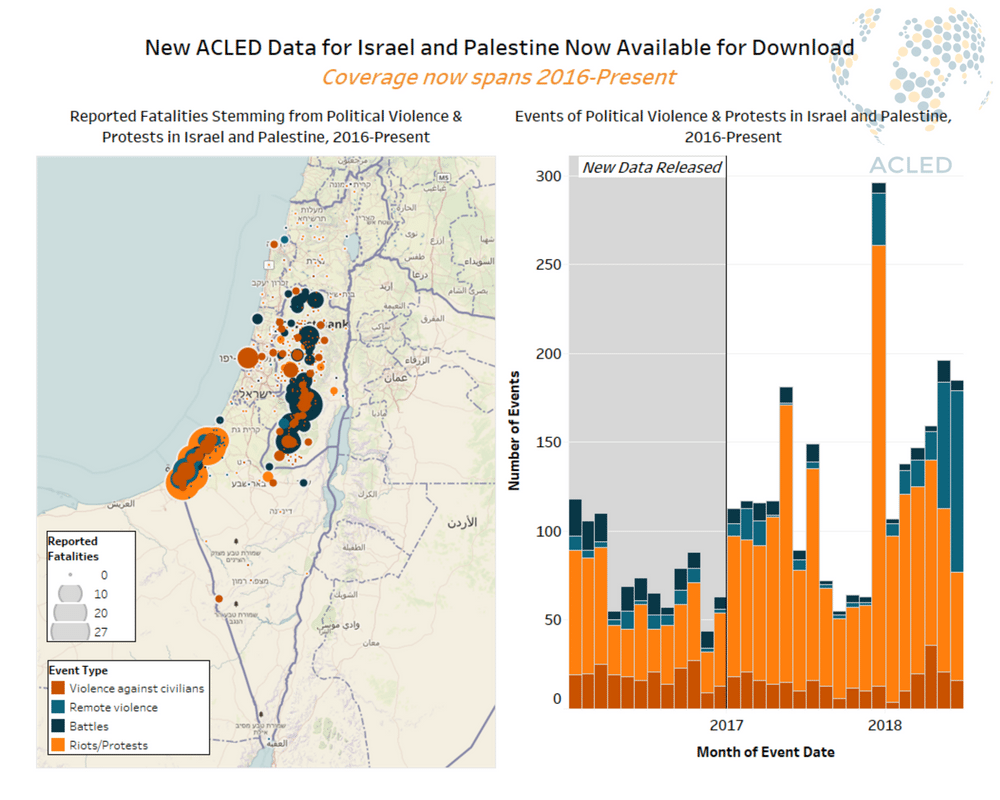In 2016, an increase in the development of settlements by Israel in the Palestinian West Bank was recorded while discriminatory land policies remained in place to prevent land development by Palestinians. This context led to numerous reports of violence across the region, particularly in locations where Palestinians and ‘settlers’ live in close proximity. Israel’s support of the settlements emboldened settlers to use violence against Palestinians and their property, in many cases with Israeli forces present to break up subsequent clashes between the two sides. A high number of ‘price tag’ attacks were also reported in 2016. Price tag attacks, as they’ve come to be known, are acts of property destruction, vandalism, and agricultural destruction carried out by Israeli settlers targeting Palestinian property in the West Bank.
Meanwhile, wider tensions between Israelis and Palestinians resulted in a significant number of events whereby individual Palestinians — without any apparent connection to an armed group — used knives or their vehicles to attack primarily Israeli military and police personnel, with a significant minority of these attacks also targeting Israeli settlers and civilians. This pattern of violence began in 2015 and continued in 2016. Israeli forces used lethal force against over 150 alleged assailants (primarily Palestinians) and at least 11 Israelis were killed in these attacks (Human Rights Watch, 2017).
In 2016, the Gaza Strip continued to recover from the destruction of the 2014 conflict with Israel and the strict sanctions which limit the volume of construction supplies allowed inside. As the situation in Gaza continued to deteriorate in 2016, this set the stage for numerous demonstrations across this Palestinian territory.
AnalysisCivilians At RiskConflict MonitoringMiddle EastPressRemote ViolenceRioting And ProtestsViolence Against Civilians







